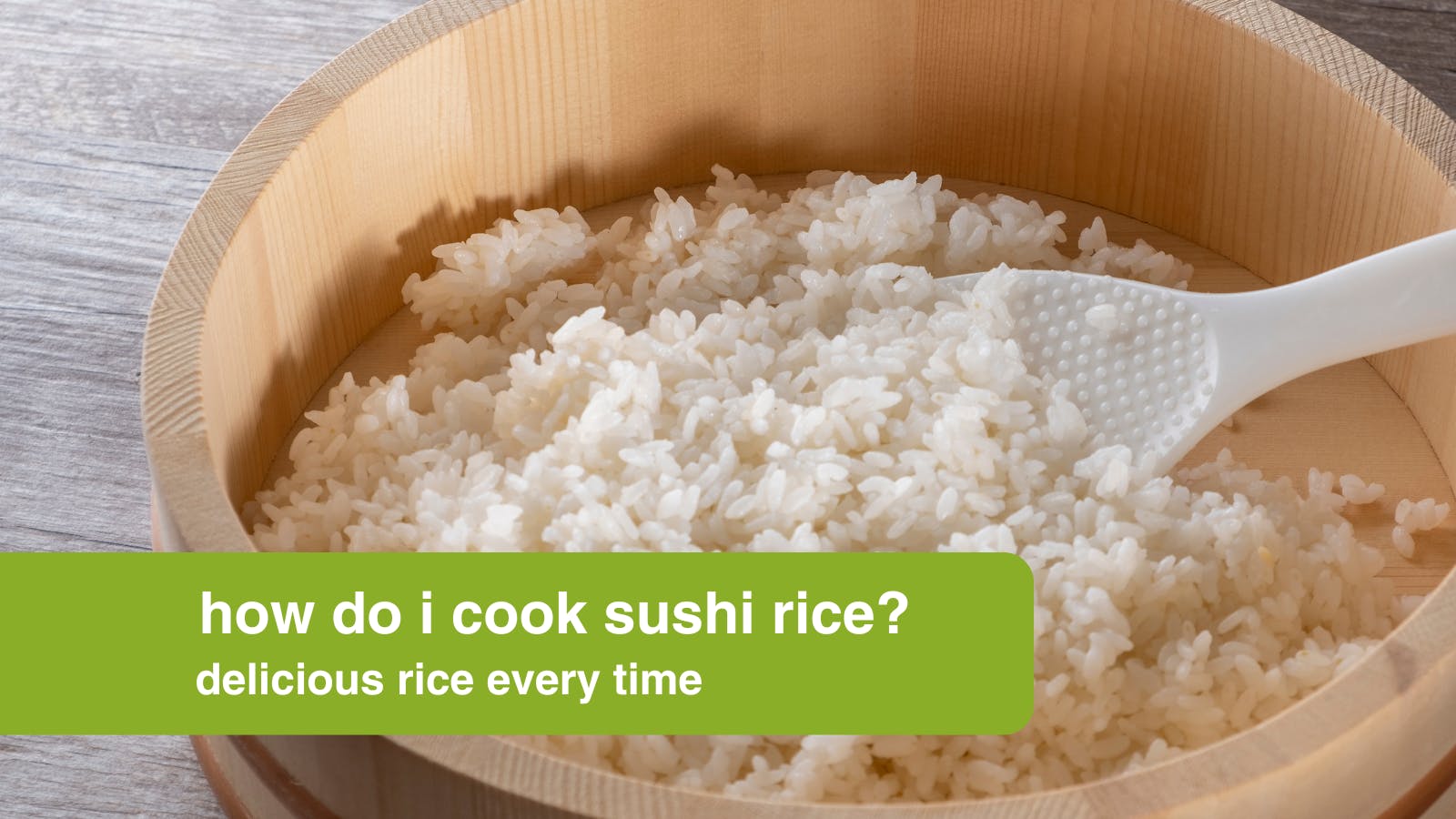your cart
Your cart is empty.
How Do I Cook Sushi Rice?
Making sushi at home is easier than you might think. And step one? Cooking the perfect sushi rice! Here are our top tips on getting the perfect texture and flavour.

Cooking rice for homemade sushi can be somewhat of an art, especially as you want to ensure you achieve the perfect texture and flavour. It needs to be sticky enough to stay together when you roll up your sushi, without being overly mushy or clumpy.
Here’s what you need to know about making delicious sushi rice at home every time.
What Rice is Used For Sushi?
When making sushi, you will need to use short-grain Japanese Japonica rice – handily, this is often simply labelled as sushi rice in supermarkets, making things nice and easy.
This kind of rice is ideal for sushi because it has a higher starch content, giving it that distinctive sticky texture. You cannot use other types of rice because they won’t provide this consistency that is essential for making sushi.
Another thing that makes sushi rice so distinctive is that it’s seasoned with rice vinegar, sugar and salt, which provides that especially delicious, moreish flavour.

How to Cook Sushi Rice
If making around 2-3 sushi rolls, you will need:
- 150g sushi rice
- 210ml water (plus water for rinsing)
- 40ml rice vinegar
- 1 tbsp sugar (or to taste)
- 1 tsp salt
Cooking Sushi Rice on the Stove
- Start by measuring out the rice and placing it in a sieve. Rinse the rice under the tap, moving it around with your hand, so each grain is washed thoroughly. Do this until the water starts running clear (i.e not cloudy from the starch of the rice).
- Add your washed and drained rice to a pan with the 210ml of water. Leave the rice to soak in the cold water for around 20 minutes. This helps ensure rice cooks evenly.
- Next, bring the pot to a boil, then reduce to a simmer for 15- 20 minutes until the water has been absorbed. Keep the pot covered with a lid.
- Remove the pot from the heat and leave it to stand for around 10 minutes. Do not remove the lid, as you want the rice to continue to steam.
- Meanwhile, make the rice seasoning by combining the rice vinegar, sugar and salt in a small saucepan. Cook over a medium heat until the sugar and salt have dissolved. Set aside to cool.
- Carefully mix the rice seasoning into your warm cooked rice.
- If you’re using the rice to make sushi rolls, leave it to cool slightly so that it is easy to handle.

Tips for Cooking Sushi Rice
Use these top tips for the best results.
- Don’t skip this rinsing stage, as this will help get rid of excess starch that would make your sushi too sticky or mushy.
- Don’t skip the soaking stage, as this will help provide an even, more consistent texture.
- Fold the sushi seasoning into the rice while the rice is still nice and warm for the best flavour.
- If you’re not using the rice immediately after cooking it, cover it with a damp tea towel or cloth so that it doesn’t dry out.
- Don’t put your sushi rice in the fridge before forming it into your chosen sushi roll, as this will make the rice dry and hard, and therefore much more difficult to shape.
- Alter the seasoning ingredients to taste and personal preference. You can also use ready-made seasoning for sushi rice rather than preparing it from scratch.
Can You Cook Sushi Rice in a Rice Cooker?
Yes! Automatic rice cookers offer a wonderfully convenient option for cooking rice, especially for people who hate standing over the stove and checking that nothing is bubbling over.
Here, you can follow the same initial steps as stated above, washing and soaking the rice to ensure it’s properly prepared. Most rice cookers will have different settings, so choose the white rice setting, ensuring your water and rice proportions are as your cooker’s instructions state – it is usually around 1:1. Some cookers may have a specific sushi rice setting that you can use.
Once your rice has finished cooking, transfer it into a bowl and fold in the rice seasoning. Don’t do this in the pot that sits within the rice cooker, as the vinegar can damage this.

Is Sushi Rice the Same as Sticky Rice?
While sushi rice does have a sticky consistency, it is not quite the same as so-called ‘sticky rice’. True sticky rice tends to be made from glutinous rice, which is a specific cultivar of Japonica rice and has an even higher starch content than sushi rice.
Sticky rice can be enjoyed on its own or as a side dish, but sushi rice rarely tends to be eaten on its own. The taste can also be quite different, especially as sushi rice is flavoured with a traditional seasoning and sticky rice has a slightly sweeter profile, which also makes it popular for use in desserts like mochi.
Can You Use Risotto Rice For Sushi?
While both are short-grain rice, it’s not recommended to use risotto/arborio rice for making sushi. When cooked, they have very different textures, and risotto rice won’t provide that stickiness that sushi rice can.
Need to stock up on rice for your culinary creations? We stock all kinds of rice to complete your Asian-inspired dishes, including sushi rice, jasmine rice and more. Shop now for some great bulk deals.
this site uses cookies
We and our advertising partners use cookies on this site and around the web to improve your website experience and provide you with personalised advertising from this site and other advertisers. By clicking allow, you accept the placement and use of these cookies for these purposes. Learn More




